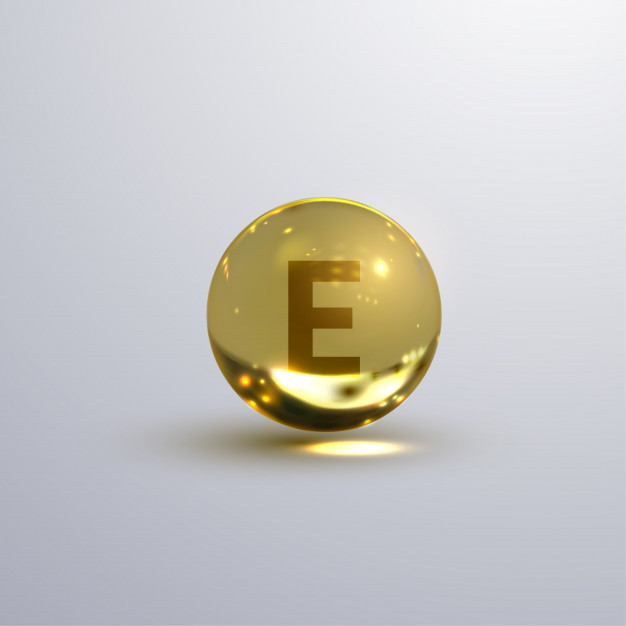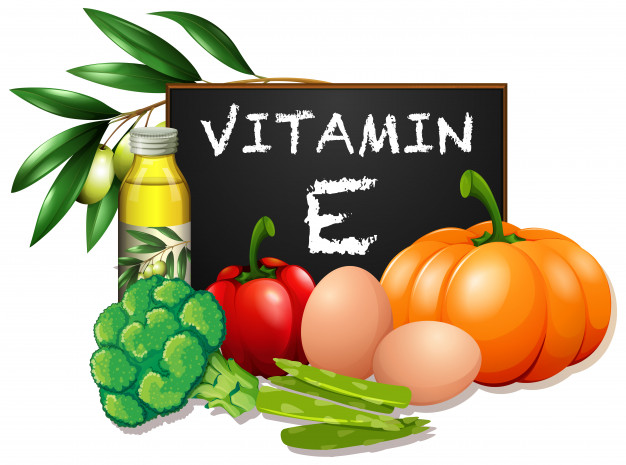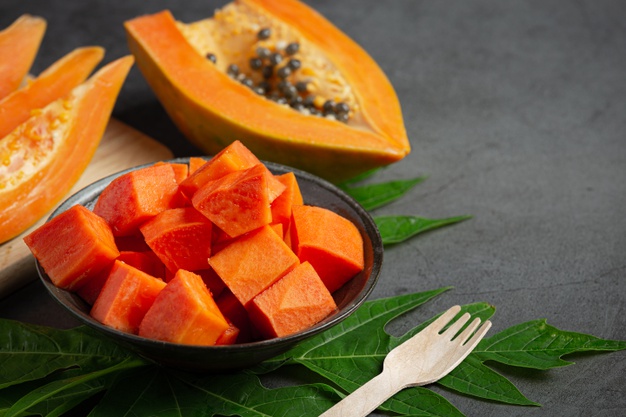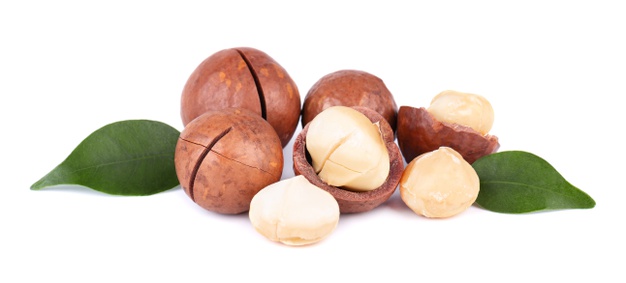Vitamin E, also known as tocopherol is an important naturally occurring antioxidant, which is essentially required for normal reproduction thus it is known as anti-sterility vitamin. It also exerts various other health benefits.
Chemistry
- It is a biochemical compound, made up of tocotrienol and tocopherol group
- 8 vitamers of Vitamin E have identified such as α tocopherol, β tocopherol, ϒ tocopherol etc among which α tocopherol is considered as the most active form of Vitamin E
- Tocopherols are the derivatives of 6-hydroxy chromane ring, which have isoprenoid side chain
- It is lipophilic in nature
- Normal range of plasma tocopherol level is considered as less than 1 mg/dl
- It can be easily destroyed by alkali, UV radiation and oxidation
Source
Foods which are rich in Vitamin E are listed below –
- Almond
- Peanut
- Peanut butter
- Sunflower oil
- Soybean oil
- Safflower oil
- Beet
- Spinach
- Asparagus
- Red bell pepper
- Avocado
- Mango
- Sunflower seed
- Collard greens
- Cotton seed oil
- Corn oil
- Meat
- Milk
- Egg
- Wheat germ oil


Absorption, storage and transport of Vitamin E
- Vitamin E requires fat and bile salt for its absorption
- It is generally absorbed in small intestine
- It is usually stored in adipose tissue, muscle and liver
- It has seen that Vitamin E within liver is incorporated into lipoproteins like LDL, VLDL, HDL and transported in these form
Recommended Dietary Allowance (RDA)
- Children of 1 to 3 years of age should consume 6mg of Vitamin E per day for fulfilling its requirement whereas children of 4 to 8 years should consume 7mg of Vitamin E per day and children of 9 to 13 years should consume 11mg of Vitamin E daily
- Daily intake of 15mg Vitamin E is recommended for adult female but during lactation phase the requirement should be increased up to 19mg per day for meeting the increased demand of the body
- Adult male should also consume 15mg of Vitamin E daily
- It has seen that the intake of Vitamin E is directly related with the intake of PUFA (poly unsaturated fatty acid), generally the requirement of Vitamin E increases with increased consumption of PUFA
Health benefits
Antioxidant activity
- It acts as potent antioxidant and helps to protect the body from oxidative damages
- It helps to prevent non enzymatic oxidation of various important cellular components of body generally caused by free radicals, superoxide, molecular oxygen and hydrogen peroxide
- It helps to protect PUFA from lipid peroxidation (peroxidation reaction)
- It plays vital role in maintaining the structure and integrity of cell membrane thus Vitamin E is also known as membrane antioxidant

Role on eye health
- Consumption of Vitamin E along with Vitamin C is very effective for improving the symptom of uveitis (swelling of eye)
- Individual undergoes laser eye surgery should consume Vitamin E with Vitamin A for improving vision and for accelerating the healing process
- It helps to reduce the prevalence of cataract as well
Role on nervous system
- It plays significant role in promoting the functionality of brain as it helps to protect brain cells from oxidative damages
- Consumption of Vitamin E is very effective for preventing ataxia, a condition, which affects the motor control adversely
- It also helps to improve the symptoms of Alzheimer’s disease
- It has seen that individual who consume adequate Vitamin E has lower risk of developing Parkinson’s disease
- It plays significant role in decreasing the severity of Huntington disease (a neurological disorders that affects thinking, emotion and movement) in early stage

Role on reproductive health
- It plays vital role in improving the efficiency of reproductive system and also helps to prevent infertility
- It helps to maintain and preserve the germinal epithelium of gonads, which are associated with enhancing reproductive functions
- It also helps to enhance cervical mucus, which ultimately helps the sperm to stay alive for a long period of time hence facilitates fertilization
- It helps to protect the sperm from oxidative damages and also promotes its function

Role on preventing anemia
- Vitamin E is an important substance found in the membrane of RBC that helps in maintaining the structure and function of RBC membrane hence its consumption is very much essential for synthesizing healthy RBC
- It also helps to protect RBC from hemolysis
- It basically helps to make the RBC structurally and functionally active that subsequently reduces the prevalence of anemia
Role on skin
- It helps to promote skin health
- Its antioxidant activity is responsible for protecting the skin from oxidative damages and also helps to prevent ageing
- It helps to moisturize the skin
- It is very effective for treating flaky and dry skin
- It also helps to treat various skin disorders like eczema, psoriasis, scars and wrinkle
- It helps to protect the skin from the harmful UV radiation and also helps to prevent sun burn

Other health benefits
- It helps to boost up immunological function of the body
- Consumption of Vitamin E along with Vitamin C significantly reduces the prevalence of atherosclerosis hence decreases the risk of developing coronary artery disease
- It is very effective for reducing menstrual pain as well. It is better to consume Vitamin E along with fish oil at least for two days before bleeding and three days after bleeding for providing rapid pain relief
- Children who suffer from beta thalassemia should consume Vitamin E as it helps to improve its symptoms
- Vitamin E is also very helpful for enhancing the function of kidney among those children who suffer from glomerulosclerosis
- It has anti-inflammatory activities as well that help to prevent inflammation, swelling and pain. It is thus very beneficial to be consumed by those individual who suffer from arthritis (joint swelling)
- It also plays significant role in stabilizing coenzyme Q hence facilitates cellular respiration
Disease condition
Vitamin E should be consumed as per recommendation (mentioned above) for fulfilling its requirement in optimum level but if it is consumed in poor amount or in large amount then it may develop various health complications that affect the health in a very bad manner.

Below table will provide an overview of its deficiency disorders and hyperactivity –
|
Deficiency disorders |
Hyperactivity |
|
|


Source:
Basambombo, L.L., Carmichael, P.H., Côté, S. and Laurin, D., 2017. Use of vitamin E and C supplements for the prevention of cognitive decline. Annals of Pharmacotherapy, 51(2), pp.118-124.
Clarke, M.W., Burnett, J.R. and Croft, K.D., 2008. Vitamin E in human health and disease. Critical reviews in clinical laboratory sciences, 45(5), pp.417-450.
Mutalip, S.S.M., 2020. Vitamin E and reproductive health. In Molecular Nutrition (pp. 543-559). Academic Press.
Packer, L. and Landvik, S., 1989. Vitamin E: introduction to biochemistry and health benefits. Annals of the New York Academy of Sciences, 570, p.1.
Rizvi, S., Raza, S.T., Faizal Ahmed, A.A., Abbas, S. and Mahdi, F., 2014. The role of vitamin E in human health and some diseases. Sultan Qaboos University Medical Journal, 14(2), p.e157.
Traber, M.G., 2014. Vitamin E inadequacy in humans: causes and consequences. Advances in nutrition, 5(5), pp.503-514.
Weber, P., Birringer, M., Blumberg, J.B., Eggersdorfer, M. and Frank, J. eds., 2019. Vitamin E in Human Health. Humana Press.









